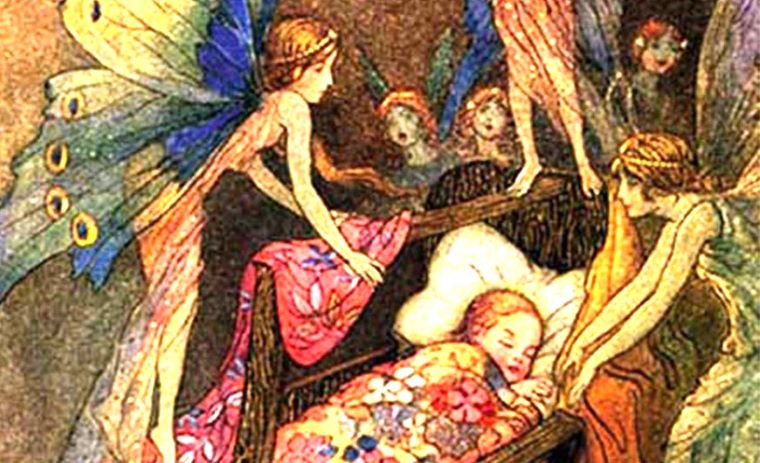
There is something off about the Doyle girl. The whole town knows it. You can hear them murmuring at the pub, late at night, when they think that no one is listening.
“She ain’t right,” they say, their voices laced with worry and whiskey. “She just ain’t right.”
It is something about her eyes, they say. Or about the way she cries too much, or the way she is always sick. Even her family started acting differently, like they were hiding something.
Then, from a dark lit corner of the room, someone says the word – “Changeling” – and the space falls silent.
The chronicle of the Changeling is hundreds of years old but remains popular across the Celtic lands to this day. It is a simple story of exchange – the act of replacing someone for someone else who is both similar and distinctively different at once.
The Changeling is a fairy creature which, in most cases, takes the place of a human child who has been abducted by the fae folk. Often, children become servants to the fae, but they are also taken for their beauty or as an act of revenge. In some cases, they are snatched simply because of the fae’s hatred of humans.
There are also adult versions of the Changeling story also, in which the fairies will abduct a young adult or new mother. Taking a young adult is usually done for marriage purposes, while the taking of a new mother supports the nursing of the fairy young. In either case, the aim is to create a stronger bloodline among the fairies. Adult Changelings are often described as an “enchanted log” – created to look exactly like the human whose place they have taken.
 While there are common threads woven throughout all these tales, the fairy creature now living among the humans is discernibly different, either an altered physical appearance or a drastic shift in personality – frightening for both the immediate family and the townsfolk.
While there are common threads woven throughout all these tales, the fairy creature now living among the humans is discernibly different, either an altered physical appearance or a drastic shift in personality – frightening for both the immediate family and the townsfolk.
Interestingly, and despite its deep mythology, the dark tales and history of Changelings are grounded in truth.
Changelings were often used to explain away unknown illness, particularly in cases of young children and women.
By way of example, we can look to Ireland.
In 1895, a woman by the name of Bridget Cleary – a dressmaker and egg seller from Co. Tipperary – was tortured and murdered by burning by her own husband, Michael Cleary, who believed her to be a Changeling. He was right; in the days leading up to her murder, she took ill (likely from pneumonia) and was also seen leaving an egg offering at a fairy site known as Kylenagranagh. This, and that fact that Bridget was an incredibly intelligent and fashionable woman, led many to believe she had been taken by the fairies and replaced with a Changeling.
Similarly, there is the tale of Michael Leary, a young child who died by drowning in Co. Kerry in 1826 at the hands of his parents. Leary had been quite sick for most of his life, and his family – seeking guidance – turned to a local woman named Ann Roach, who claimed that she had “supernatural abilities.” Roach told the Leary family to bathe the young boy in the River Flesk each morning as a way to “put the fairy out of it.” On the third morning, the family held him beneath the water for too long. Interestingly, this story was the inspiration for the bestselling 2017 novel The Good People by Australian author Hannah Kent.
There are many other narratives in the vast canon of Changeling legend, both known and unknown, from across the seven Celtic nations.
For today’s readers, the story of the Changeling has evolved into a much larger conversation – one that touches on misogyny, ableism, and more. We can only hope that the lessons learned from the lives of Bridget Cleary, Michael Leary and the little Doyle girl remind us that, despite our differences, the ties that bind us together are stronger than the things that tear us apart.




















Leave a Comment